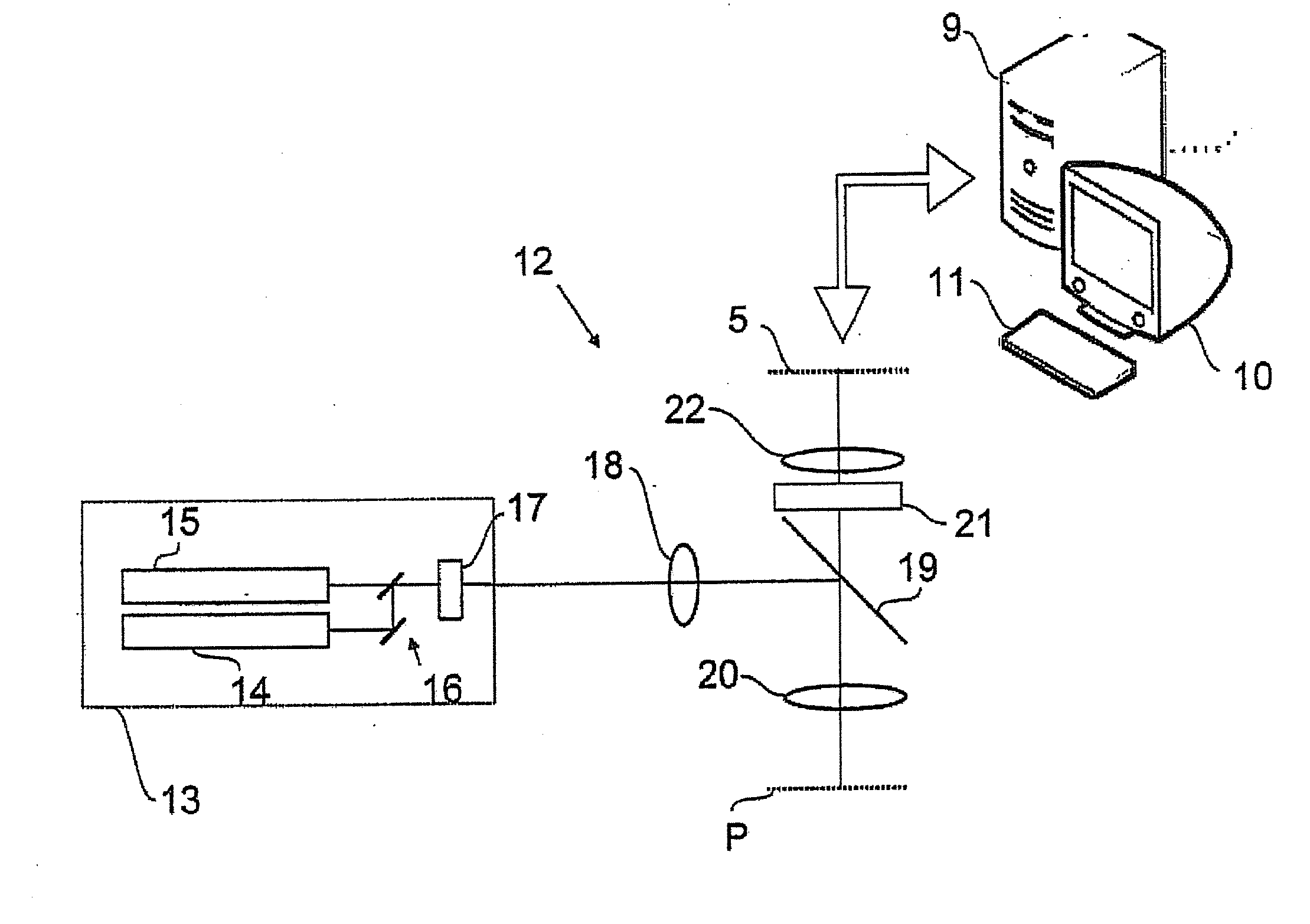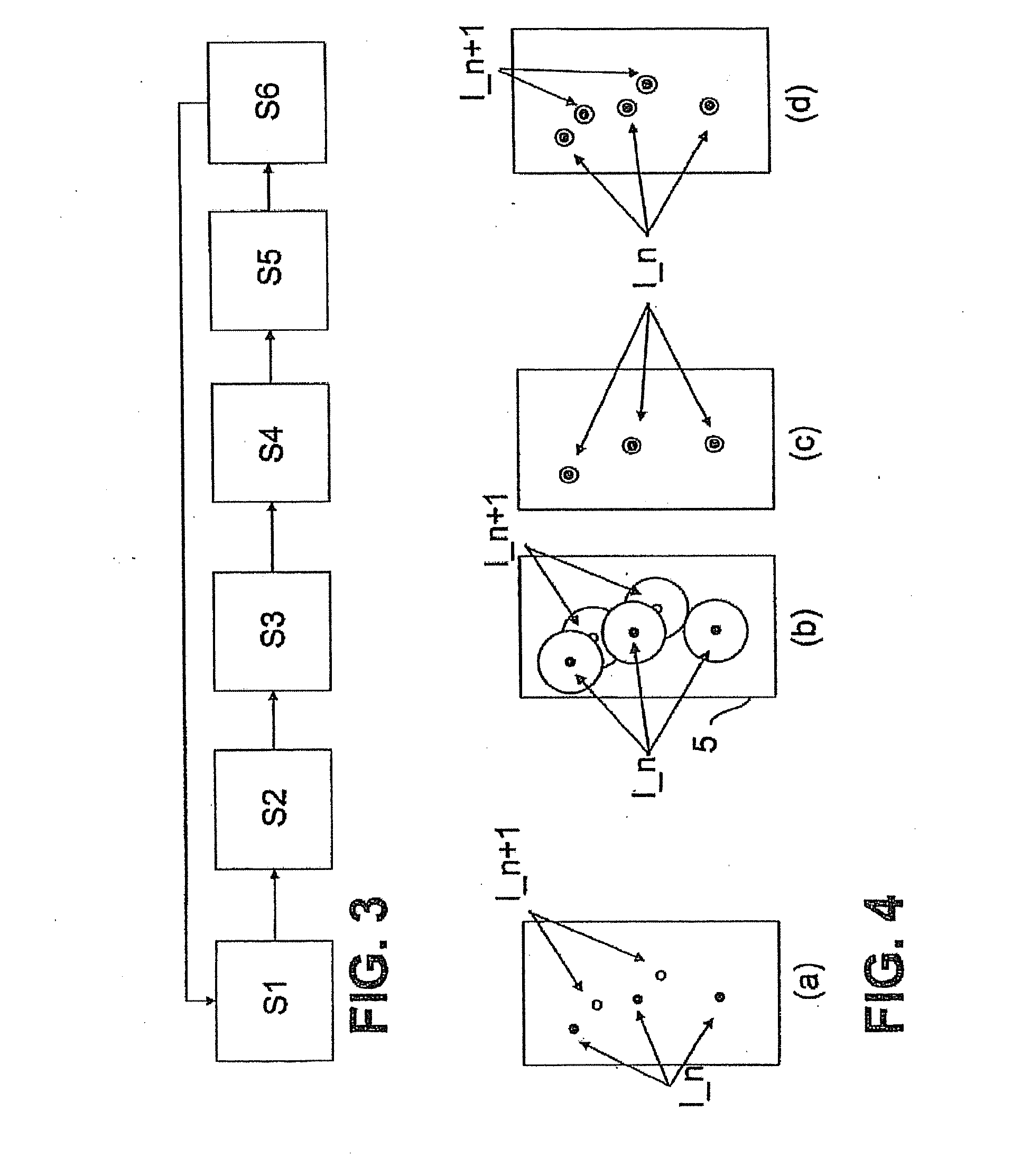Resolution-Enhanced Luminescence Microscopy
a luminescence microscopy and luminescence enhancement technology, applied in the field of high spatial resolution luminescence microscopy, can solve the problems of inability to use the current method for thick samples, disadvantages, and unnecessary radiation of samples in regions
- Summary
- Abstract
- Description
- Claims
- Application Information
AI Technical Summary
Benefits of technology
Problems solved by technology
Method used
Image
Examples
Embodiment Construction
[0051]FIG. 1 shows schematically a marking molecule 1 that was excited for fluorescence. Naturally, the fluorescence detection requires a plurality of excitations, because each excitation delivers exactly one fluorescent photon and the radiation detection requires an integration of many photons. The fluorescent radiation emitted by the marking molecule 1 can be detected in a microscope based on physical principles only at a limited optical resolution. Even if the microscope reaches the diffraction limit of the optical resolution, the photons of the fluorescent marking molecule 1 are still scattered in a diffraction-limited way and thus detected in a diffraction slice 2. The microscope thus reproduces, in principle, instead of the geometric extent of the marking molecule 1, which is designated schematically as a black circle in FIG. 1, a larger object that is shown in FIG. 1 by the diffraction slice 2. The size of the diffraction slice 2 depends on the quality of the microscopy devic...
PUM
 Login to View More
Login to View More Abstract
Description
Claims
Application Information
 Login to View More
Login to View More - R&D
- Intellectual Property
- Life Sciences
- Materials
- Tech Scout
- Unparalleled Data Quality
- Higher Quality Content
- 60% Fewer Hallucinations
Browse by: Latest US Patents, China's latest patents, Technical Efficacy Thesaurus, Application Domain, Technology Topic, Popular Technical Reports.
© 2025 PatSnap. All rights reserved.Legal|Privacy policy|Modern Slavery Act Transparency Statement|Sitemap|About US| Contact US: help@patsnap.com



